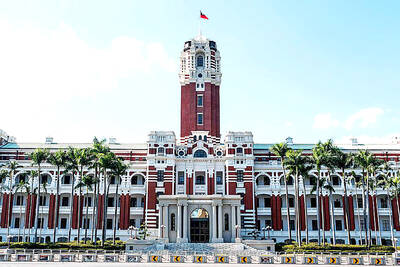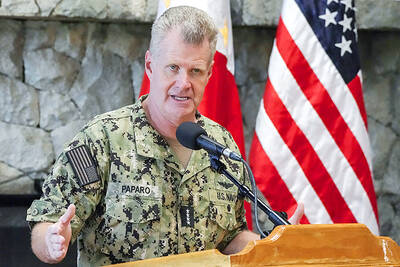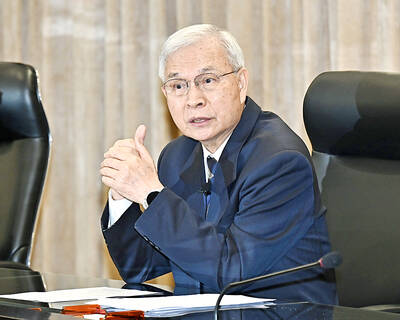A US congressional report released this week makes it clear that, without the acquisition of new aircraft, the Taiwanese air force risks being a shadow of itself by 2020 and incapable of meeting the challenge it faces in the Taiwan Strait.
The annual report by the Congressional Research Service, entitled Taiwan: Major US Arms Sales Since 1990 — which Defense News has called “required reading inside Taiwan defense circles and among US defense officials working with the island’s military” — provides a detailed analysis of US arms sales to Taiwan over more than two decades.
The section on F-16 jet sales provides the greatest shock. By 2020, it says, the number of fighter aircraft in the air force would drop by 70 percent without the acquisition of new F-16s as it retires near-obsolete F-5s and some ageing Mirage 2000s, whose spare parts are reportedly extremely costly.
Even if Taiwan were to acquire the 66 F-16C/Ds it has been requesting since 2006, the total number of aircraft would still have dropped by 50 percent by that time, the report says.
In numerous requests to the US over the years, Taiwan had made it clear that it understands the severity of the shortage it faces within the next decade and it has argued that it is seeking both upgrades for its 145 F-16A/Bs sold in 1992 and new aircraft.
In a letter of request submitted in November 2009, Taiwan wrote that the upgrade program would by necessity be “in parallel to, and not a substitute for, new F-16C/D” aircraft.
On a visit to the US in September last year, Vice Minister of National Defense Andrew Yang (楊念祖) called the F-16C/Ds and diesel-electric submarines — another program that has been stalled for several years — the most urgent systems for Taiwan to acquire, not the F-16A/B upgrades.
A notification to Congress in September last year included a US$5.2 billion upgrade package for the F-16A/Bs, but not the new F-16C/Ds. The Ministry of National Defense says the retrofits, which would be budgeted over a period of 12 years, would bring the F-16A/Bs’ capabilities to 80 percent of those of the F-16C/D, with some capabilities even surpassing the F-16C/D.
However, the package does not include new engines, meaning that their operational range would remain more limited than that of F-16C/Ds. The program also does not include airframe work, leaving unaddressed the problem of ageing aircraft that have now been in service for two decades.
According to Lockheed Martin, a retrofit would not start until 2017, after five years of preparatory work. Once it begins, it would take one squadron, or about 24 F-16A/Bs, out of service at a time over a period of five years.
Furthermore, the program would take three years longer than a program to sell the same number of 145 new F-16C/D fighters, which it says would take seven years.
During that same period, a number of Indigenous Defense Fighters (IDF) will also be out of service for mid-life upgrades, further compounding the quantitative crisis.
More recent events, which are not covered in the CRS report, seem to indicate that Taiwan is having second thoughts about running the two programs in parallel. Earlier this month, legislators and senior military officials said that the F-16A/B upgrades were more expensive than expected and that Taiwan might not have the financial resources to do both. Some also argued that rather than purchase the new F-16C/Ds, Taiwan should instead bid for Lockheed Martin’s F-35B, a problem-plagued aircraft that is still under development.
Such signaling has given rise to speculation in defense circles that Taiwan might want out of the F-16C/D project, at a time when the White House may finally be willing to make the aircraft available. A defense industry source told the Taipei Times yesterday that Taiwan’s National Security Council has been informed of the urgency of submitting a new letter of request for the F-16C/Ds to push the issue, but that such recommendations had “disappeared into a black hole.”
A strong indicator of a possible shift occurred on Thursday when President Ma Ying-jeou (馬英九) met former Florida governor Jeb Bush, who arrived the same day on a three-day visit.
Although some were expecting that Ma would restate Taiwan’s interest in acquiring the F-16C/Ds, the president only mentioned the upgrades, telling Bush he hoped the program would provide the F-16A/Bs with capabilities “close to” those of the F-16C/Ds.

The CIA has a message for Chinese government officials worried about their place in Chinese President Xi Jinping’s (習近平) government: Come work with us. The agency released two Mandarin-language videos on social media on Thursday inviting disgruntled officials to contact the CIA. The recruitment videos posted on YouTube and X racked up more than 5 million views combined in their first day. The outreach comes as CIA Director John Ratcliffe has vowed to boost the agency’s use of intelligence from human sources and its focus on China, which has recently targeted US officials with its own espionage operations. The videos are “aimed at

STEADFAST FRIEND: The bills encourage increased Taiwan-US engagement and address China’s distortion of UN Resolution 2758 to isolate Taiwan internationally The Presidential Office yesterday thanked the US House of Representatives for unanimously passing two Taiwan-related bills highlighting its solid support for Taiwan’s democracy and global participation, and for deepening bilateral relations. One of the bills, the Taiwan Assurance Implementation Act, requires the US Department of State to periodically review its guidelines for engagement with Taiwan, and report to the US Congress on the guidelines and plans to lift self-imposed limitations on US-Taiwan engagement. The other bill is the Taiwan International Solidarity Act, which clarifies that UN Resolution 2758 does not address the issue of the representation of Taiwan or its people in

US Indo-Pacific Commander Admiral Samuel Paparo on Friday expressed concern over the rate at which China is diversifying its military exercises, the Financial Times (FT) reported on Saturday. “The rates of change on the depth and breadth of their exercises is the one non-linear effect that I’ve seen in the last year that wakes me up at night or keeps me up at night,” Paparo was quoted by FT as saying while attending the annual Sedona Forum at the McCain Institute in Arizona. Paparo also expressed concern over the speed with which China was expanding its military. While the US

SHIFT: Taiwan’s better-than-expected first-quarter GDP and signs of weakness in the US have driven global capital back to emerging markets, the central bank head said The central bank yesterday blamed market speculation for the steep rise in the local currency, and urged exporters and financial institutions to stay calm and stop panic sell-offs to avoid hurting their own profitability. The nation’s top monetary policymaker said that it would step in, if necessary, to maintain order and stability in the foreign exchange market. The remarks came as the NT dollar yesterday closed up NT$0.919 to NT$30.145 against the US dollar in Taipei trading, after rising as high as NT$29.59 in intraday trading. The local currency has surged 5.85 percent against the greenback over the past two sessions, central